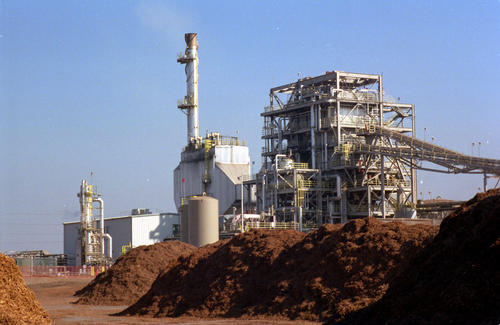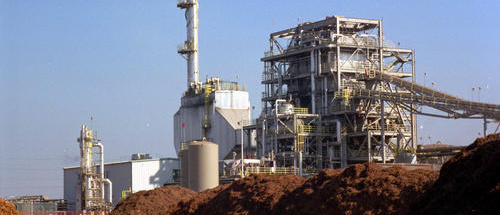Will burying biomass underground curb climate change?
stacking bricks —
Though carbon removal startups may limit global warming, significant questions remain.

On April 11, a small company called Graphyte began pumping out beige bricks, somewhat the consistency of particle board, from its new plant in Pine Bluff, Arkansas. The bricks don’t look like much, but they come with a lofty goal: to help stop climate change.
Graphyte, a startup backed by billionaire Bill Gates’ Breakthrough Energy Ventures, will bury its bricks deep underground, trapping carbon there. The company bills it as the largest carbon dioxide removal project in the world.
Scientists have long warned of the dire threat posed by global warming. It’s gotten so bad though that the long-sought mitigation, cutting carbon dioxide emissions from every sector of the economy, might not be enough of a fix. To stave off the worst—including large swaths of the Earth exposed to severe heat waves, water scarcity, and crop failures—some experts say there is a deep need to remove previously emitted carbon, too. And that can be done anywhere on Earth—even in places not known for climate-friendly policies, like Arkansas.
Graphyte aims to store carbon that would otherwise be released from plant material as it burns or decomposes at a competitive sub-$100 per metric ton, and it wants to open new operations as soon as possible, single-handedly removing tens of thousands of tons of carbon annually, said Barclay Rogers, the company’s founder and CEO. Nevertheless, that’s nowhere near the amount of carbon that will have to be removed to register as a blip in global carbon emissions. “I’m worried about our scale of deployment,” he said. “I think we need to get serious fast.”
Hundreds of carbon removal startups have popped up over the past few years, but the fledgling industry has made little progress so far. That leads to the inevitable question: Could Graphyte and companies like it actually play a major role in combating climate change? And will a popular business model among these companies, inviting other companies to voluntarily buy “carbon credits” for those buried bricks, actually work?
Whether carbon emissions are cut to begin with, or pulled out of the atmosphere after they’ve already been let loose, climate scientists stress that there is no time to waste. The clock began ticking years ago, with the arrival of unprecedented fires and floods, superstorms, and intense droughts around the world. But carbon removal, as it’s currently envisioned, also poses additional sociological, economic, and ethical questions. Skeptics, for instance, say it could discourage more pressing efforts on cutting carbon emissions, leaving some experts wondering whether it will even work at all.
Still, the Intergovernmental Panel on Climate Change, the world’s forefront group of climate experts, is counting on carbon removal technology to dramatically scale up. If the industry is to make a difference, experimentation and research and development should be done quickly, within the next few years, said Gregory Nemet, professor of public affairs who studies low-carbon innovation at the University of Wisconsin-Madison. “Then after that is the time to really start going big and scaling up so that it becomes climate-relevant,” he added. “Scale-up is a big challenge.”
Will burying biomass underground curb climate change? Read More »
